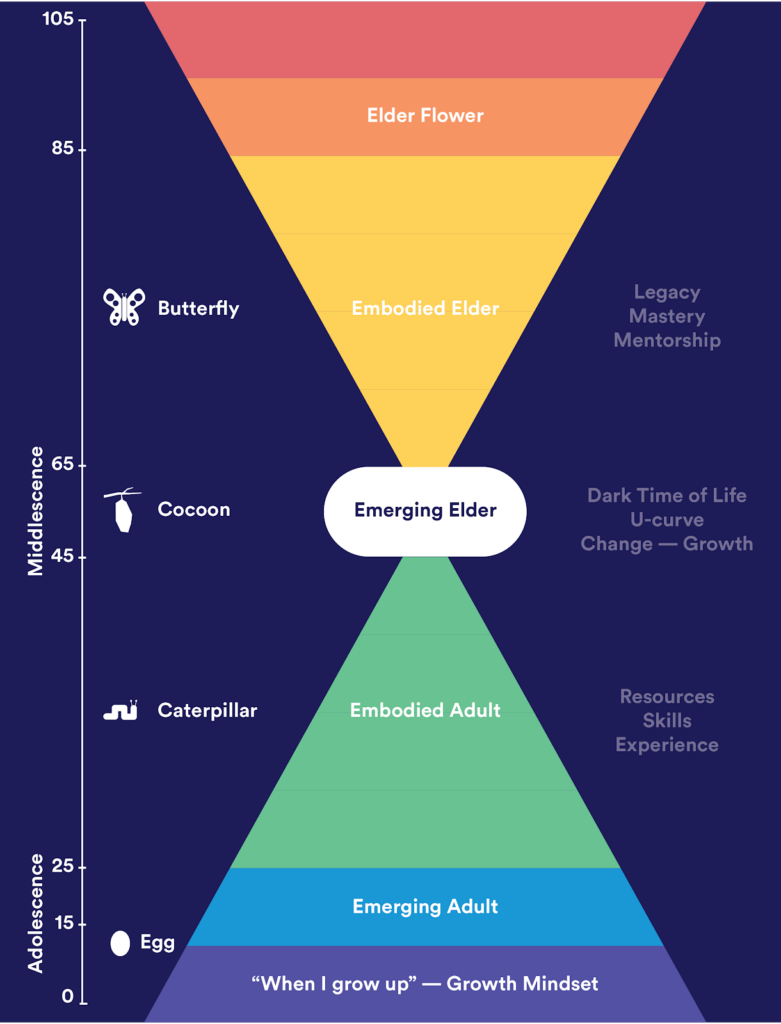It is about this time that our brain reaches full size. When we reach age 15, we start to think we are an adult, and at age 25, we know we are an adult. Brain science suggests that the prefrontal cortex does not fully function until age 25 when risk management and long-term planning abilities kick into gear.
Now, imagine if we looked at the period from 25-45 as being “Embodied Adults.” Again, does one feel like a fully-fledged adult at 25? Maybe not, as we’re still learning what that means. But, certainly, by 45, we are well into adulthood mastery. This is the caterpillar stage of acquiring skills, wealth, relationships, children, and so on. It is no coincidence that the U-Curve of Happiness dips to its lowest point at around age 45-50 when we feel the full weight of what it means to be an adult.
Next, comes the traditional definition of midlife (45-65) when we go into the “tunnel” stage, which is what author Alison Armstrong calls midlife. Unfortunately, the term “midlife crisis” is so limiting. Brené Brown calls it the “midlife unraveling” as you’re starting to unravel all of your identities. What if instead, we settled into becoming an “Emerging Elder” from age 45-65? I suspect many would resist the idea of calling themselves an elder at 45. Yet, most would be open to the idea of emerging into becoming an elder.
This is a rich time for introspection, sharing wisdom, trying new things, and taking time off to truly live in that cocoon of life—mindful of the physical shift where, just like in adolescence, our bodies are emerging into something else: hair is graying, thinning or gone, vision changes (literally and figuratively), wrinkles appear, women complete menopause, and men experience andropause hormonal changes. More and more of us call this “middlescence,” or the corollary to adolescence. Yet, a critical difference is that during adolescence, there are all kinds of rituals and guidance to help us get through this liminal, transitional time of life.
Although it sounds nice, “middlescence” is when many of us experience a crisis of confidence. The caterpillar is unsure of him or herself. So many responsibilities have been accumulated and, yet, we realize we won’t live up to all the hopes and goals we’d set earlier in life. We know we have to let go of the intensely focused caterpillar drive, but we’re not yet comfortable sitting still. This cocoon is our metaphor for midlife—a time when we can feel alone in the dark without much in the way of societal support or rituals. Often without knowing it, we are in the midst of a metamorphosis. One that’s illustrated in the U-curve of Happiness where life starts to get better in the middle of midlife, and even better into our sixties and seventies when we’re becoming “Embodied Elders.” Who knows, maybe we blossom into “Elderflowers” in our later years?
All I know is this: when you turn the diagram below on its side, it resembles a butterfly.
